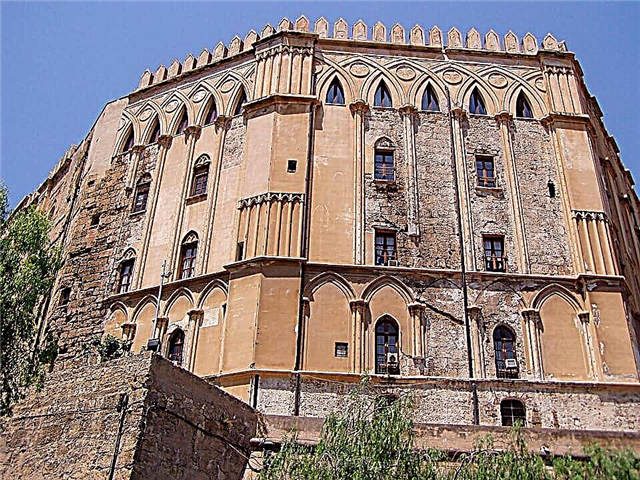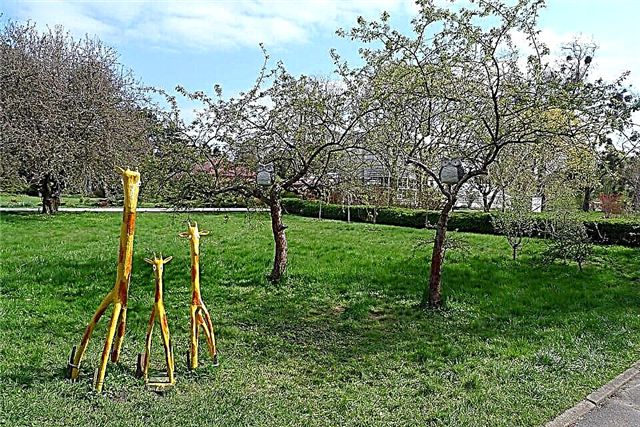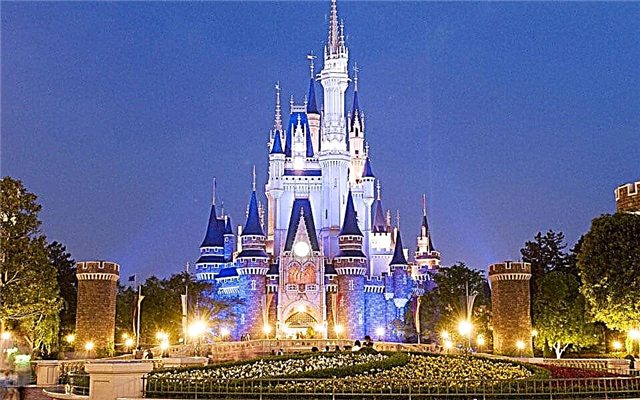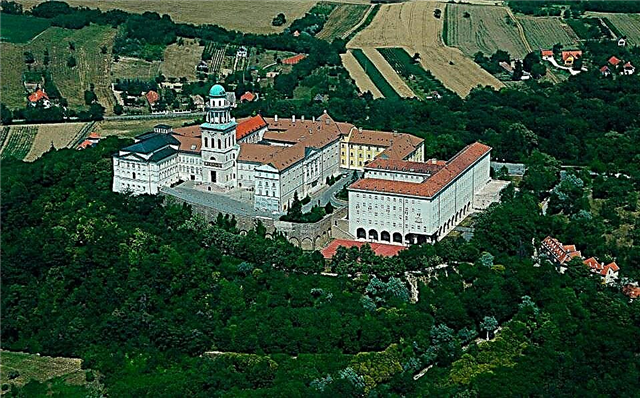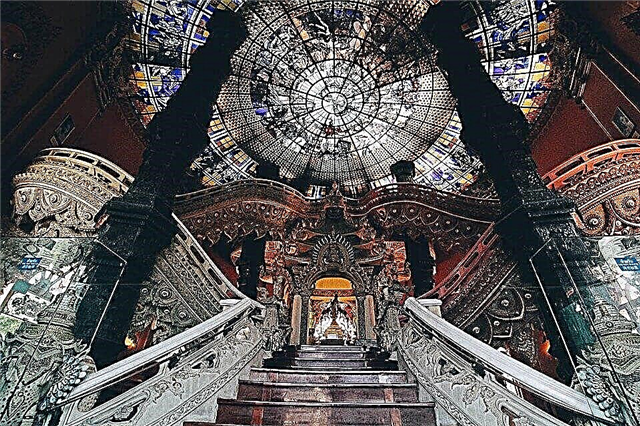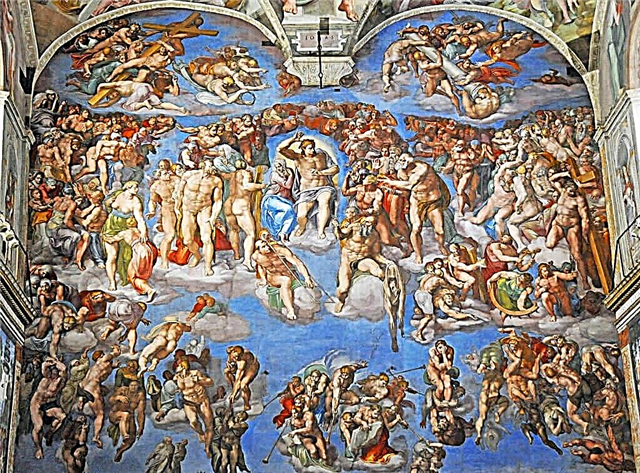Among the luxurious palaces and temples of the Vatican, there is an inconspicuous building, the interior of which is considered one of the greatest masterpieces in the world. This is the Sistine Chapel. The shrine is a sacred place for the Catholic world. The Pope celebrates Mass here, as well as the election of a new head of the Catholic Church.
Who painted
According to centuries-old traditions, the Italian temple was decorated with delightful frescoes, impressing its parishioners and guests. The interior design of the chapel embodies the grandeur and cultural heritage of Christian Rome in the past centuries. After the construction of the building of the Sistine Chapel, for two years a galaxy of famous artists from Florence was engaged in painting the temple. They were Sandro Botticelli, Domenico Ghirlandaio, Pietro Perugino and Cosimo Rosselli.
In total, the painters created 16 frescoes depicting biblical subjects. Despite the fact that the shrine was painted by different masters of the 15th century, the chapel became truly famous thanks to the works of the brilliant artist Michelangelo. The craftsmen were invited to paint the ceiling and the altar wall 30 years after the construction of the chapel.
Construction history
The Sistine Chapel was built in 1481 on the initiative of Pope Sixtus IV, who gave this small building his name. Dad was a kind of odious person. His reign was marked by an increase in corruption, bribery, the imposition of high taxes, as well as the public burning of heretics. Sixtus IV also had bright deeds. He moved the papal residence to the Vatican, was engaged in introducing citizens to art, opening museums and libraries.
The political situation in the fragmented principalities of Italy in the Middle Ages did not guarantee the safety of the head of the Papal State. Internal intrigues and conspiracies against the pontiff, as well as an external threat from the Ottoman Empire, forced the construction of a more protected building, where the Pope, cardinals and religious officials could take refuge in case of danger.
Baccio Pontelli was appointed the chapel's architect. According to the architect's project, the church was supposed to have high, twenty-meter strong walls capable of withstanding the attack of enemy troops on the Vatican. The chapel was built in the form of a rectangular fortification with three floors. The facade of the church is crowned with a cylindrical vault and is decorated with twelve lancet windows. The upper tier, surrounded by loophole windows, was intended for armed soldiers. The exterior of the building was devoid of any pomp. The chapel was not supposed to hold any solemn ceremonies. The chapel is 40 meters long and 13 meters wide.
Description

The chapel premise is a spacious hall with an oval vault where the altar is located. The floor is covered with magnificent mosaics, while the walls and ceiling are painted with frescoes by the great masters of the time. There are stone benches along the perimeter of the chapel. The hall is divided by a marble partition with beautiful chandeliers. Visually, the walls of the room are divided into several zones. The lower part is decorated with silver and gold draperies. The middle row is represented by frescoes depicting the earthly life of Jesus Christ and Moses. On the upper tier there are portraits of the first rulers of the Papal States.
Initially, the ceiling of the chapel was painted in the form of a starry sky, but after a while cracks began to appear on it. Pope Julius II (successor to Sixtus IV) invited the young sculptor Michelangelo to remove the flaws on the ceiling, who at that time did not have sufficient experience in such work. As history shows, the choice of the pope was absolutely correct.
Michelangelo created special "air scaffolds" that were fastened in the holes above the windows. The design did not interfere with the service in the chapel, since it was in a suspended position without supports from below. Michelangelo was faced with the most difficult task - to cover the surface with picturesque paintings, the area of which was 600 m2.
Frescoes

The north wall of the chapel is decorated with frescoes depicting the story of Jesus. The works describe baptism, temptation, the preaching of Christ, as well as the calling of the apostles. The action of the paintings unfolds against the backdrop of the Italian landscape and architectural ensembles. In addition to the central figure of Christ, many people are depicted in the frescoes.
The south side of the chapel is framed by a cycle of paintings that tell about the deeds of Moses. The work of Sandro Botticelli "Youth of Moses" deserves special attention. The fresco describes several events at once within one composition. Moses kills an Egyptian who raised his hand against a Jew, protects and grazes the sheep, runs away along a path into a spacious distance, and also leads his fellow tribesmen out of Egypt.

The ceiling of the chapel, painted by Michelangelo, amazes with its abundance of vivid characters. His work portrays biblical heroes and prophets. The images are separated by a painted architectural frame. Based on the Old Testament stories, the artist, with his works, tells the story of the creation of the world and people by God, the separation of the sexes, the fall of mankind and retribution for wrongdoing.
All the heroes of the paintings have powerful physical and spiritual strength. In the images of the characters, one can feel the realism and drama of the events described. One of Michelangelo's central frescoes is the Creation of Adam. The artist has talentedly portrayed the athletic physique of a person who lies in a relaxed position in a desert area. The Creator flies to Adam, stretching out his hand to him, thereby giving life.

The following works are depicted on the ceiling of the chapel: "Separation of Light from Darkness", "Creation of the Sun and Moon", "Creation of Eve", "Original Sin", "Expulsion from Paradise". Michelangelo worked on the frescoes from 1508 to 1512. 23 years after the completion of the chapel plafond, Michelangelo painted the altar wall with a fresco called "The Last Judgment". The artist has depicted over 400 figures filled with complex, uncertain poses with desperate gestures. In the center of the composition, Christ and the Virgin Mary judge the entire human race. On the left side of Jesus are sinners who are destined for a terrible fate, on the right are the righteous, chosen to serve in heaven.
Restoration
Over time, dust, dirt, soot from candles, as well as a leaking roof caused serious damage to the chapel's ceiling and wall frescoes. A large-scale restoration of the chapel began in 1979 with the financial support of the Vatican and the Japanese TV channel, which received exclusive rights to film the stages of the restoration. To restore the works, a chemical agent was required that could soften the dirt, which the specialists carefully removed with a sterile sponge.
Interesting facts and secrets
The Sistine Chapel is the seat of the conclave where the new Pope is elected. Elections are held behind closed doors. Cardinals from all over the world vote for a man worthy to become the head of the Catholic Church. During the voting process, a pipe is installed on the roof of the chapel. If black smoke comes out of it, then the elections did not take place. White smoke signifies the election of a new pope.
All the secrets of the Sistine Chapel are associated with the brilliant artist Michelangelo. Scientists claim that in his works he left an encrypted message to posterity, which is at odds with church tenets. Michelangelo believed that the nature of the human body is primary, and the soul is secondary. On the fresco "Creation of Adam" you can see the silhouette of a huge human brain around the Lord.The master showed that spiritual power is associated with the higher mind. In many of his paintings, the artist depicts naked men. Thus, Michelangelo emphasizes that first there was fertilization, and then spiritualization.
Opening hours and ticket prices
The chapel is open from 9:00 to 18:00 every day, except Sunday. To enter the chapel, you must purchase a single ticket that includes admission to the Vatican Museums. The ticket costs 16 euros.
Where is it and how to get there
The Sistine Chapel is located in the Vatican next to St. Peter's Basilica. You can get there by metro to Ottaviano station, as well as by buses and trams. All stops are located near the central square of the Vatican, which can be reached simply on foot.




